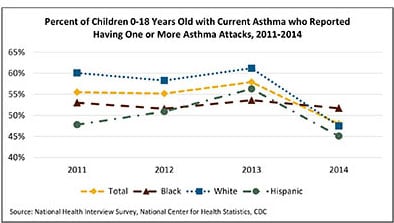National Center for Environmental Health
Mission
To protect people’s health from environmental hazards that can be present in the air we breathe, the water we drink, and the world that sustains us by investigating relationships between environmental factors and health, developing guidance, and building partnerships.
Organization
- Division of Environmental Health Science and Practice
- Division of Laboratory Sciences
Priorities
- Ensure safe drinking water.
- Protect vulnerable populations from harmful environmental exposures.
- Detect and prevent environmental diseases and conditions.
Provided leadership in environmental health emergency management: NCEH led CDC’s response to the lead contamination of drinking water in Flint, Michigan, including Emergency Operations Center activation, epidemiologic studies, and community outreach.
Increased focus on safe water systems: Released the 2016 Model Aquatic Health Code to support prevention of waterborne illness and other risks in recreational water sources. The MAHC provides guidance on design, construction, operation, and maintenance of pools, spas, and hot tubs.
NCEH responded to waterborne disease outbreaks in New York City, Illinois, Ohio, and Texas in FY 2016 and provided support to CDC’s prevention and response activities through NCEH’s Safe Water Program.
Awarded grants to help keep water safe: Increased safe water protection knowledge and capabilities in
14 states and 5 counties during
the last 5 years through the Safe Water for Community Health (Safe WATCH) grant program. In FY 2016, CDC awardees sampled almost 1,400 wells and found that 322 wells had contaminated water that was considered unsafe to drink
Improved the public’s health through environmental public health tracking: Enabled 277 data-driven actions during the last 5 years. during the last 5 years.
Why We’re Here
Printable Version. [PDF – 125 KB]
The National Center for Environmental Health (NCEH) protects America’s health from environmental hazards. NCEH monitors health outcomes and environmental exposures to guide actions that protect and promote health.
After funds were partially restored ($17 million in FY2016), the Lead Program partnered with states to identify and report on over 200,000 children under 6 who had a dangerously high blood lead level from 2014 to 2016. The data indicate a potential benefit from CDC-funded activities of $11.7 billion in increased total lifetime earnings due to avoided loss of IQ for these children.
How We Work
- Collect and share environmental health data that are used to prevent sickness, disability, and death from harmful exposures and natural, chemical, and radiologic disasters and incidents.
- Identify and disseminate the environmental health best practices that are the most effective at improving health and reducing medical costs.
- Maintain the most advanced environmental public health laboratory in the world.
- Use innovative laboratory methods and environmental public health tracking to detect and prevent environmental diseases and conditions.
- Support state, tribal, territorial, and local environmental health programs and laboratories.
- Prepare for and respond to natural disasters and environmental emergencies.
What’s Needed
- Promising solutions that are piloted and scaled to keep water safe from chemicals and toxins such as per- and poly-fluoroalkyl substances (PFAS).
- Continued vigilance to protect children from lead exposure through a nationwide Lead Poisoning Prevention Program and elimination of exposure to lead in the environment.
- Expanded environmental public health tracking to strengthen the nationwide tracking network and integrate environmental and health data to drive evidence-based actions in communities.
- More tools and methods for enabling state and local health departments to adapt to the effects of environmental conditions on health and be prepared to take action when environmental-related vector-borne diseases or extreme weather events strike.

Long-Term Opportunities
- Protect millions of people from waterborne contaminants, and respond to water quality issues in drinking water distribution systems.
- Develop and maintain a lead exposure early warning system to proactively identify exposures, and enhance support for a registry in Flint, Michigan to identify and disseminate knowledge on the impact of lead exposure on health.
- Continue exploring the benefits of incorporating electronic health records and emerging chemical exposures into environmental public health tracking.
- Highlight asthma as a priority health condition that has evidence-based interventions which can prevent the need for costly emergency department visits.
- Increase NCEH’s capacity to perform biomonitoring testing to provide environmental chemicals exposure information by state or locality.
For more information visit https://www.cdc.gov/nceh or call 1-800-CDC-INFO.